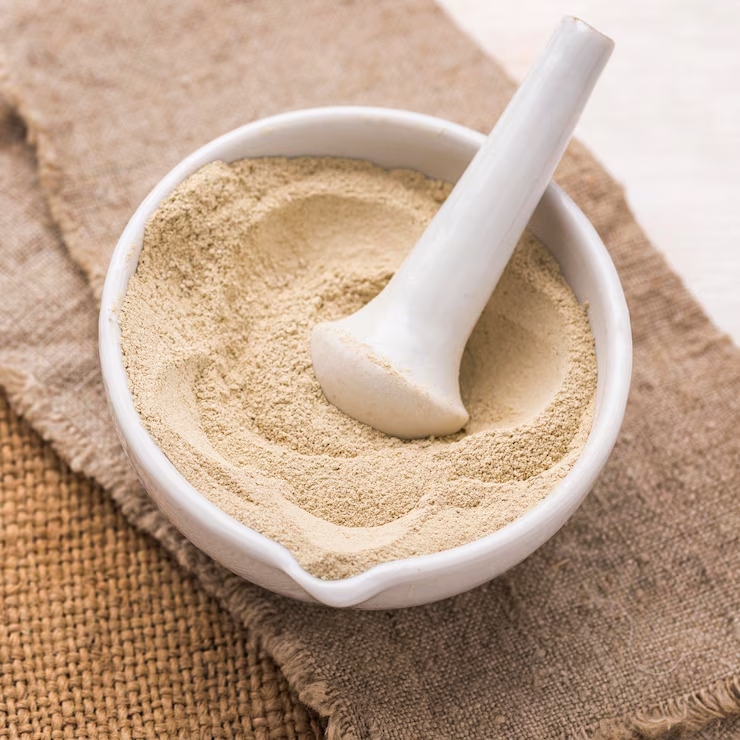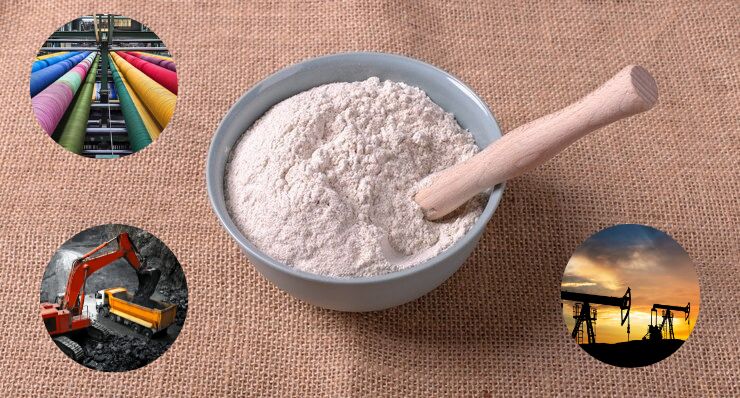Table of Contents
Guar gum powder, derived from the guar plant, is a remarkable substance that finds applications across a variety of industries due to its unique chemical properties. While it’s commonly known in food and pharmaceutical circles, guar gum powder plays an equally critical role in industries as varied as mining, textiles, paper and oil drilling. Its natural thickening, binding and stabilizing capabilities make it a versatile ingredient for both small-scale and large-scale manufacturing processes.
This article explores the dynamic applications of guar gum powder, focusing on how it helps industries face complex challenges and enhances operational efficiency. This natural ingredient continues to drive innovation in sectors that rely on stability, consistency and efficiency.
The Role of Guar Gum Powder in the Mining Industry
The mining industry requires various chemicals and additives to ensure efficiency and safety during extraction, processing and refining operations. One critical application of mining grade guar gum powder lies in hydraulic fracturing, commonly known as “fracking.”
-
Handling Viscosity and Fluid Loss: In fracking operations, guar gum powder is mixed with water and other chemicals to create a high-viscosity fluid. This fluid is then injected into the rock formations to release trapped oil or gas. The guar gum serves as a stabilizing agent, preventing the fluid from thinning out during the process. The viscosity and fluid loss control ensure that the fracking fluid can effectively fracture the rock, allowing better flow of resources.
-
Operational Challenges in Mining: Mining operations frequently deal with challenges such as irregular particle sizes, high pressures and the need for precise consistency in hydraulic fracturing fluids. By leveraging, the industry can optimize fluid performance, maintaining high flow rates and efficient fracture designs. Guar gum helps mitigate operational issues such as pump clogging, thus ensuring smoother operations.
Textile Industry: Guar Gum as a Stabilizer
In the textile industry, guar gum for textile industry helps address several challenges related to dyeing, printing and finishing. It acts as a thickening agent and stabilizer, ensuring that textile products maintain consistent properties throughout processing.
-
Dyeing and Printing: It helps create stable pastes for textile printing, where the dyes need to adhere evenly and consistently to fabrics. This application is especially important in fabrics with complex patterns that require uniform color distribution. Guar gum for textile applications reduces the likelihood of uneven coloring and improves fabric stability, especially when processing delicate fibers.
-
Stabilization in Textiles: In textile treatments, guar gum is used to improve the viscosity of solutions applied to fabrics. For industries producing non-woven textiles, the ability to control texture and pliability through guar gum is essential. This stabilizing agent ensures that products such as bed linens, towels and upholstery maintain high-quality standards without compromising the final feel or durability.
Guar Gum Powder in Pharmaceutical Formulations: A Natural Solution
The pharmaceutical industry continues to explore the uses of guar gum for various applications, from controlled drug delivery to formulations for gastrointestinal health. In the case of guar gum for pharmaceutical uses, it addresses issues like stability, controlled release and viscosity.
-
Enhancing Stability in Formulations: Guar gum powder is commonly used as a binder and stabilizer in tablets, capsules and syrups. This prevents the active ingredients from separating or degrading during storage. As a natural binding agent, guar gum helps in the uniform distribution of the active ingredients, maintaining the integrity of the pharmaceutical formulation.
-
Controlled Release: One of the challenges in pharmaceuticals is designing formulations that can release their active ingredients over time. By incorporating guar gum powder, manufacturers can slow down the dissolution process, ensuring that the active ingredients are released gradually. This results in more effective treatment plans, particularly for chronic conditions requiring sustained medication levels in the body.
Guar Gum Powder in Food Production: Enhancing Texture and Consistency
The food industry is one of the largest consumers of guar gum powder, thanks to its ability to improve texture and consistency in various food products. Whether in dairy products, beverages or bakery goods, it plays a significant role in stabilizing emulsions and improving mouthfeel.
-
Thickening and Stabilizing: Food-grade guar gum powder is used extensively in sauces, soups and salad dressings to improve viscosity and prevent separation. It ensures that food products maintain the desired consistency even under varying temperature conditions. This helps food manufacturers face the challenge of preserving texture in products that need to be shelf-stable.
-
Binding in Bakery Products: In gluten-free bakery goods, guar gum for food acts as a binder that holds ingredients together, preventing crumbling. It is often used to replace gluten, which helps improve the texture and appearance of gluten-free bread, cakes and cookies. In bakery products, guar gum ensures uniformity and consistency during production.
The Paper Industry: Enhancing Strength and Quality
The paper industry also relies on guar gum powder for its binding properties. Used in paper coatings and as a binding agent in paper production, helps manufacturers meet quality standards while improving the strength and smoothness of paper.

-
Improving Paper Texture: Guar gum for paper is used to enhance the paper’s surface characteristics. It increases wet strength, preventing paper from tearing when exposed to moisture. This is particularly important in the production of coated paper and specialty papers used for printing and packaging.
-
Reducing Water Consumption: During paper production, controlling water content is crucial to improving efficiency and reducing waste. It helps regulate moisture content, leading to enhanced paper quality and reduced energy consumption in the drying process.
Guar Gum for Oil Drilling: Enhancing Performance and Efficiency
In the oil drilling industry, guar gum plays a vital role in hydraulic fracturing (fracking) and drilling fluid formulations. Known for its high viscosity, guar gum for oil drilling is used to improve the performance and efficiency of fracking operations.
-
Fluid Viscosity: One of the key challenges in fracking operations is maintaining the proper viscosity of the drilling fluid. Guar gum powder is used to thicken the fluid, ensuring that it can effectively fracture the rock formations and transport proppants into the fractures. The guar powder helps optimize the flow of the drilling fluid, providing better performance in oil extraction.
-
Enhanced Proppant Transport: During hydraulic fracturing, it helps suspend the proppants. This ensures that the proppants are efficiently delivered to the targeted formation. By using guar gum powder, oil and gas companies can enhance the efficiency and safety of their operations.
Conclusion:
As we’ve seen, guar gum powder serves as a versatile solution across a wide range of industries, including mining, textiles, pharmaceuticals, food, paper and oil drilling. Its unique properties, such as its ability to stabilize, thicken and bind, help industries address specific challenges in product formulation, manufacturing and performance.
The role of guar gum is far-reaching and it continues to evolve as industries seek natural, effective solutions for various production needs. Whether used for improving viscosity in oil drilling fluids, enhancing texture in food products or ensuring strength in paper production, guar gum powder remains a crucial ingredient in creating high-quality products across numerous sectors.
With the ongoing advancements in production processes and an increasing understanding of its potential, the demand across industries will continue to rise, further solidifying its position as a key component in modern manufacturing.



